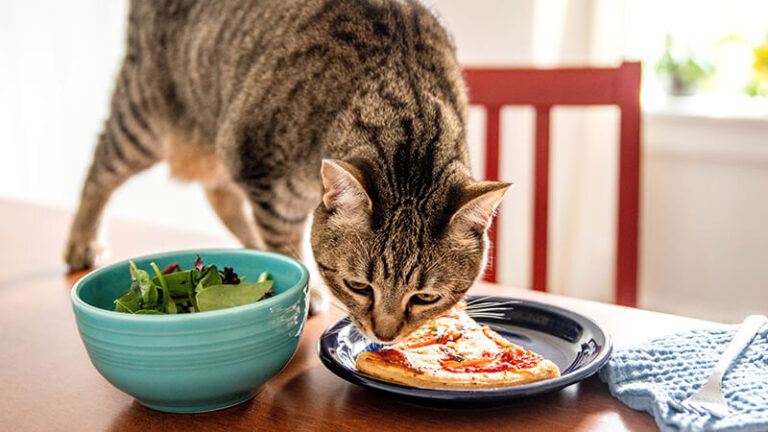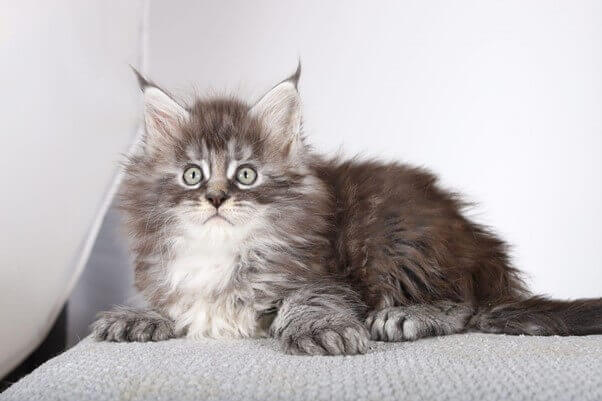Can cats eat Beets? A Comprehensive Guide For Cat Owners
Have you ever caught your feline friend eyeing your plate of roasted beets with curiosity? You might be surprised to learn that cats, despite their picky eating habits, can indeed have a taste for beets!
When it comes to feeding our pets, questions often arise about what foods are safe and suitable for them. Beets are a nutritious root vegetable packed with vitamins and minerals, but their suitability for feline consumption is soon apparent.
Contents
Can cats eat Beets?
Cats can eat beets in small, occasional amounts. Beets are non-toxic to cats and can provide nutritional benefits such as manganese, fiber, and antioxidants.
However, due to their high sugar content and potential to cause digestive issues, they should not form a large part of a cat’s diet. It’s best to offer beets sparingly and monitor for any adverse reactions.
Key Takeaway:
- Cats can eat beets in moderation, benefiting from their fibre and nutrients.
- Safe preparation involves cooking, chopping, and avoiding seasonings.
- Beet intake should be monitored, and a vet should be consulted for guidance.
Are Beets Safe for My Cat?
Beets contain essential nutrients like fibre, folate, and manganese, which can contribute to a healthy diet for your cat. However, it’s crucial to note that cats are obligate carnivores, meaning their primary dietary requirement is meat. While beets can provide some nutritional benefits, they should only be considered an occasional treat rather than a staple.
When offering beets to your cat, ensure they are cooked thoroughly and served in small, manageable portions. Raw beets can be challenging for cats to digest and may pose a choking hazard. Additionally, some cats may not take to the taste of beets, so it’s essential to observe your pet’s reaction and appetite.
While beets aren’t toxic to cats, certain seasonings or preparations commonly used with beets, such as garlic or onion powder, can be harmful. Always serve plain, cooked beets to your cat without any added ingredients.
Dos And Don’tsDon’ts
Dos:
- Consult Your Vet: Before introducing beets into your cat’s diet, it’s essential to consult your veterinarian. They can provide personalized advice based on your cat’s health and dietary needs.
- Start Slow: Give your cat small amounts of cooked and chopped beets. Monitor their reaction closely for any signs of adverse effects, such as diarrhoea, vomiting, or lethargy.
- Ensure Proper Preparation: Wash, scrub, and peel the beets thoroughly before cooking them. Cut them into small, manageable pieces to reduce the risk of choking hazards for your cat.
- Consider Beet Pulp: If your cat enjoys the benefits of beets but isn’t keen on eating them directly, consider opting for commercial cat foods containing beet pulp as a source of fibre.
Don’ts
- Avoid Raw Beets: Raw beets can be difficult for cats to chew, swallow, and digest, increasing the risk of gastrointestinal discomfort or blockages. Always cook beets before offering them to your cat.
- Limit Seasonings: When preparing beets for your cat, avoid adding butter, oil, or seasonings. These additives can introduce unnecessary calories and fat, potentially leading to gastrointestinal issues or pancreatitis.
- Watch for Allergic Reactions: While allergic reactions to beets are rare in cats, monitoring your pet closely when introducing new food is essential. Discontinue feeding beets immediately if you notice any signs of allergic reactions, such as itching, swelling, or difficulty breathing.
- Moderate Intake: Beets should not comprise a significant portion of your cat’s diet. Moderation is key to ensuring your pet’s balanced and healthy nutritional intake.
Safe Preparation Methods
- Thorough Washing: Before cooking, wash, scrub, and peel the beets thoroughly to remove any dirt or contaminants from the surface.
- Cooking: Cook the beets until they are soft and tender. This makes them easier for your cat to chew and digest. Boiling, steaming, or baking are suitable cooking methods for beets.
- Chopping into Small Pieces: Chop the beets into small, bite-sized pieces after cooking. This reduces the risk of choking hazards and makes it easier for your cat to consume.
- Avoid Seasonings: Do not add butter, oil, salt, or other seasonings to the beets. Cats have specific dietary requirements, and seasoning could upset their stomach or cause other health issues.
- Consider Beet Pulp: If you prefer not to prepare beets yourself, consider opting for commercial cat foods that contain beet pulp as a source of fibre. These products are formulated specifically for cats and provide a convenient way to incorporate beets into their diet.
Suitable Quantities
- Start Small: When introducing beets to your cat’s diet, start with a small amount. Monitor their reaction closely for any signs of gastrointestinal distress or allergic reactions.
- Moderation: Beets should only constitute a small portion of your cat’s diet. Avoid overfeeding them beets, as excessive consumption can lead to digestive upset or weight gain.
- Limit Frequency: Offer beets to your cat occasionally rather than as a regular part of their meals. This helps prevent dependency on beets for essential nutrients and maintains dietary variety.
- Monitor Intake: Keep track of how much beet your cat consumes and adjust accordingly based on their response and dietary needs.
- Consult Your Vet: If you need clarification on the appropriate quantity of beets to feed your cat, consult your veterinarian for personalized advice. They can recommend suitable portions based on your cat’s age, weight, and health status.
Conclusion
In conclusion, cats can eat beets in moderation, but they should not form a significant part of their diet. As with any new food introduction, monitor your cat’s reaction and consult your veterinarian if you have any concerns. Remember, a balanced diet tailored to your cat’s needs is critical to keeping them healthy and happy.
NOTE: Always check with your veterinarian first before giving your cat any new foods, especially “people foods.” What might be okay for one cat might not be suitable for your cat, depending on multiple factors, such as their age, health history, health conditions, and diet. Cats on prescription diets should not be fed any food or treats outside the diet.
Related: Can Adult Cats Eat Kitten Food?
Frequently Asked Questions (FAQs) About Cats and Beets
Q: Can cats eat raw beets?
A: It’s not recommended to feed raw beets to cats. Raw beets can be problematic for cats to digest and may pose a choking hazard. Cooking beets thoroughly before offering them to your cat is safer and more accessible for digestion.
Q: Are there any health benefits for cats from eating beets?
A: Beets contain essential nutrients like fibre, folate, and manganese, which can contribute to a cat’s overall health. However, since cats are obligate carnivores, their primary dietary requirement is meat. While beets can provide some nutritional benefits, they should only be given in moderation as an occasional treat.
Q: How should beets be prepared for cats?
A: Beets should be cooked thoroughly and served plain, without any added seasonings or ingredients. It’s essential to cut them into small, manageable portions to prevent choking and ensure easy consumption.
Q: Can cats have beetgreens or beetroot leaves?
A: While beet greens or beetroot leaves are not toxic to cats, they should be offered in A: moderation. These greens contain oxalates, which can interfere with calcium absorption in large quantities. It’s best to cook beet greens before feeding them to your cat to reduce oxalate levels.
Q: What should I do if my cat shows discomfort after eating beets?
A: If your cat experiences any adverse reactions after eating beets, such as vomiting, diarrhoea, or lethargy, it’s essential to contact your veterinarian immediately. These symptoms could indicate an underlying issue or sensitivity to the food.
Q: Are there any risks associated with feeding beets to cats?
A: While beets are not toxic to cats, certain seasonings or preparations commonly used with beets, such as garlic or onion powder, can be harmful. Always ensure that beets are plain and cooked before offering them to your cat.
Q: How can I tell if my cat likes beets?
A: Cats can have varying preferences when it comes to food. Observing your cat’s reaction to beets can help determine their enjoyment. Look for signs of interest, such as sniffing, licking, or eagerly eating the beets. If your cat shows no interest or reluctance to eat them, it’s best to avoid offering beets in the future.
Related Cats Guides:
- Can Cats Eat Bones?
- Can Cats Eat Chicken Broth?
- Can Cats Eat Pumpkin Seeds?
- Can Cats Eat Kale?
- Can Cats Eat Human Food?
- Can Cats Eat Crackers?
- Can Cats Eat Canned Dog Food?
- Can Cats Eat Fruit?
- Can Cats Eat Chicken Nuggets?
- Golden Retriever Pros and Cons: What Every Pet Parent Should Know - 15 September 2025
- Cane Corso Dog Breed: Health, Care, and Lifespan - 14 September 2025
- Catahoula Leopard Dogs: Description, Temperament, Lifespan, & Facts - 21 July 2025







